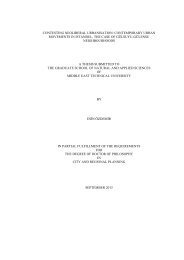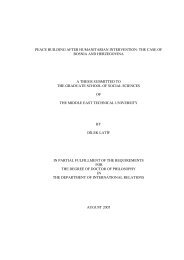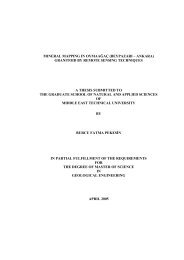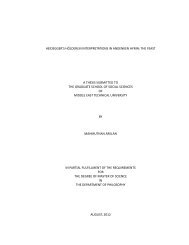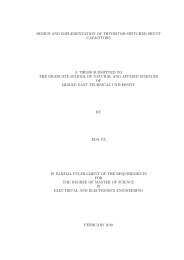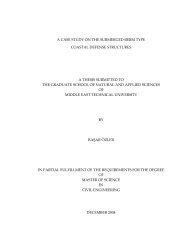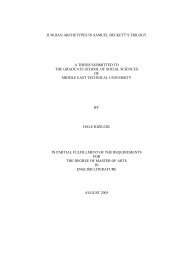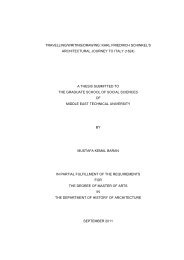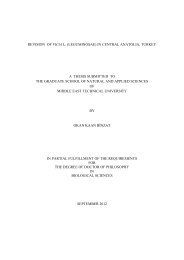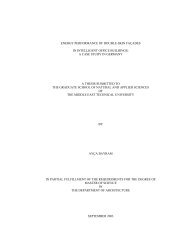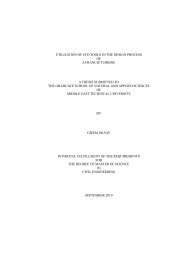View Original - Middle East Technical University
View Original - Middle East Technical University
View Original - Middle East Technical University
You also want an ePaper? Increase the reach of your titles
YUMPU automatically turns print PDFs into web optimized ePapers that Google loves.
analysis(2001:74). Marshallian General Equilibrium mindset as the underdog is<br />
merely a second thought. Mostly because,<br />
[u]ntil recent years, economists believed they knew what a market was: many<br />
viewed the general market of general equilibrium theory and the definitions of<br />
actual decentralised market mechanisms as a continuum(Boyer 2002d:323).<br />
New neoclassical theory is indeed a quasi-monetarist model that studies the<br />
macroeconomic variables of a system in which Walrasian micro-mechanisms are<br />
never awry unless erratic monetary policy affords anomalies. This theory debuted<br />
with Lucas’ secondhand uptake on the Phillips curve. It first had been the foundation<br />
for Friedman’s proviso that the effects of monetary policy on structural<br />
unemployment unlike its effects on the rate of inflation was always short-term.<br />
Lucas’ aggregate supply curve understanding of that economic heuristic on the other<br />
hand had excogitated the quantity-theoretic effects of money growth on money<br />
income between its real-income and price level facets so that an econometric model of<br />
such transient effects would be more conclusive. New neoclassical theory is basically<br />
a Walrasian scarecrow against Keynesian economics. It had sobered for awhile at<br />
least those economists who consider it practical that there can be a mechanism in<br />
which economy is away from a Walrasian market equilibrium with certain profit and<br />
increased labour income schedules provisionally or otherwise dormant, yet still<br />
research the terms in which the said economy would anticipate changes in these very<br />
income-increasing prospects and schedules for further profitability. This said, for<br />
Lucas, Walrasian auctioneer is not a straight parti pris. In other words, the fardel of<br />
equilibrium is partly on the economic units who would nevertheless resort to a true<br />
model of the economy as well as the time scheme of monetary perturbations and<br />
particular money prices in those markets in which they are sellers when they<br />
anticipate future prices; and partly on the Walrasian auctioneer, though the latter is no<br />
longer the intermediary of ‘perfect information’. In Lucas, ‘quantity variations’<br />
therefore ultimately stems from the contradictions of ‘limited information’ on the part<br />
of the competitive units and not from the contradictions of Walrasian market as a<br />
price system. To the extent that ‘limited information’ can be complicit of ‘quantity<br />
62



